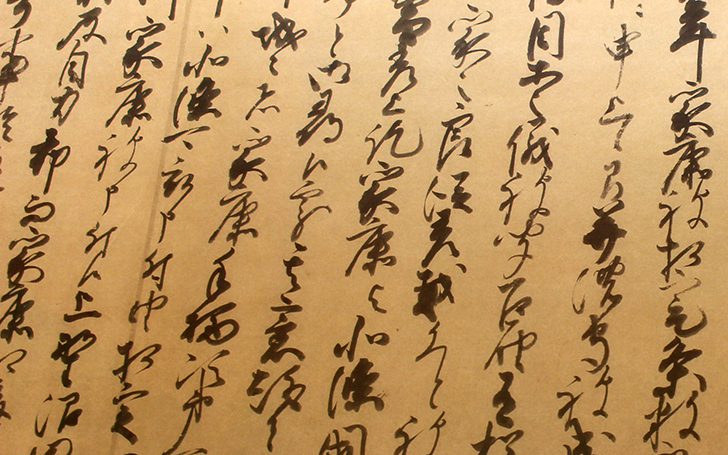2英語で説明したい日本1芋煮

日本語訳載せときます。
芋煮
芋煮とは里芋を使った鍋料理です。
山形県や宮城県を中心に、芋煮会と呼ばれる秋に河川敷等でグループで芋煮を作って食べる季節行事が行われます。
芋煮会の始まりは江戸時代と言われます。
もともと芋煮会は里芋の収穫を祝う収穫祭の意味を持っていましたが、近代になってだんだんレジャー化して町内会や小中学校などのイベントになっていきました。
1980年代になると、この地方の観光業界が花見同様芋煮会を観光イベントとして商品化していき、全国の人々が芋煮会を知って食べに来るようになりました。
芋煮には里芋、ネギ、蒟蒻が入っていて、醤油や砂糖、お酒などで煮込みます。昔は肉は入っていませんでしたが、現在は牛肉や豚肉も具材になっています。
南東北を代表する芋煮を、私は食べられることを勧めます。
作ったタイピングゲームの一覧はこちらです。
https://typing.twi1.me/profile/userId/113751
あとブログのURLは下記に。関連記事と動画があるのでよろしければご覧下さい。英語ニュース以外もあります。
http://okakyutaro.blog.fc2.com/
| 順位 | 名前 | スコア | 称号 | 打鍵/秒 | 正誤率 | 時間(秒) | 打鍵数 | ミス | 問題 | 日付 |
|---|---|---|---|---|---|---|---|---|---|---|
| 1 | りく | 4959 | B | 5.0 | 98.1% | 184.5 | 933 | 18 | 14 | 2025/11/02 |
関連タイピング
-
勝利の女神:NIKKEのOld Tales EDです。
プレイ回数455英語歌詞1475打 -
よく耳にすることわざを集めてみました
プレイ回数40万かな60秒 -
何秒で全部打てるか挑戦してみよう!
プレイ回数433万短文かな298打 -
中1で習う英単語が100個あります!
プレイ回数30短文英字526打 -
夏目漱石
プレイ回数17万長文かな512打 -
主人公ケイトによる物語です
プレイ回数3.4万長文かな1417打 -
速ければ速いほど強い世界
プレイ回数790万短文かな87打 -
5分間の速度部門の模擬試験です。打つ速度で級が決まります
プレイ回数92万長文300秒
問題文
(Imoni)
Imoni
(Imoni is a hot pot dish using taro.)
Imoni is a hot pot dish using taro.
(In Yamagata and Miyagi prefectures, a seasonal event called Imoni-kai is held in autumn,)
In Yamagata and Miyagi prefectures, a seasonal event called Imoni-kai is held in autumn,
(where groups gather to make and eat imoni on riverbeds.)
where groups gather to make and eat imoni on riverbeds.
(It is said that the Imonikai began in the Edo period.)
It is said that the Imonikai began in the Edo period.
(Originally, Imoni-kai was meant as a harvest festival to celebrate the harvest of taro,)
Originally, Imoni-kai was meant as a harvest festival to celebrate the harvest of taro,
(but in modern times, it has gradually become a leisure event)
but in modern times, it has gradually become a leisure event
(and has become an event for neighborhood associations and elementary and junior high schools.)
and has become an event for neighborhood associations and elementary and junior high schools.
(In the 1980s, the local tourism industry commercialized the Imonikai as a tourist event,)
In the 1980s, the local tourism industry commercialized the Imonikai as a tourist event,
(just like cherry blossom viewing,)
just like cherry blossom viewing,
(and people all over the country came to know about the Imonikai and come to eat it.)
and people all over the country came to know about the Imonikai and come to eat it.
(Imoni contains taro, green onions, and konnyaku, and is simmered in soy sauce, sugar, and sake.)
Imoni contains taro, green onions, and konnyaku, and is simmered in soy sauce, sugar, and sake.
(It used to contain no meat, but now beef and pork are also used as ingredients.)
It used to contain no meat, but now beef and pork are also used as ingredients.
(I recommend that you try imoni, a dish representative of southern Tohoku.)
I recommend that you try imoni, a dish representative of southern Tohoku.








